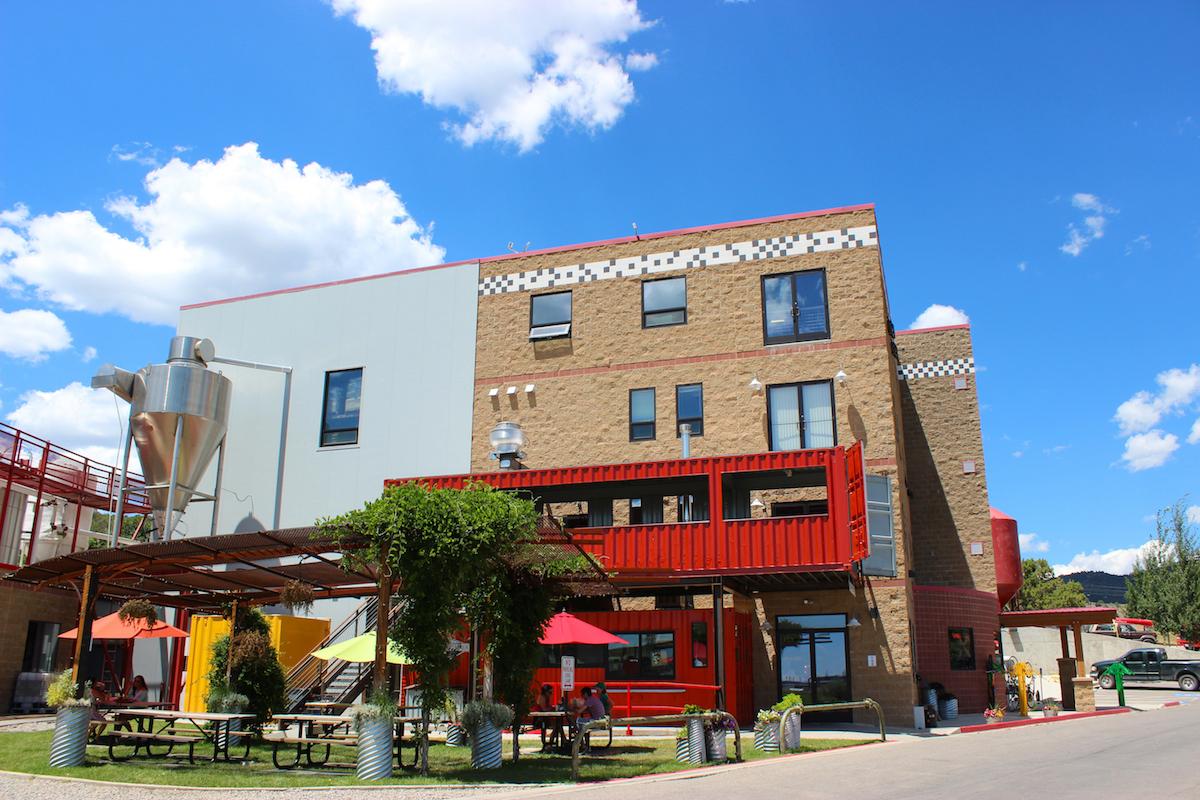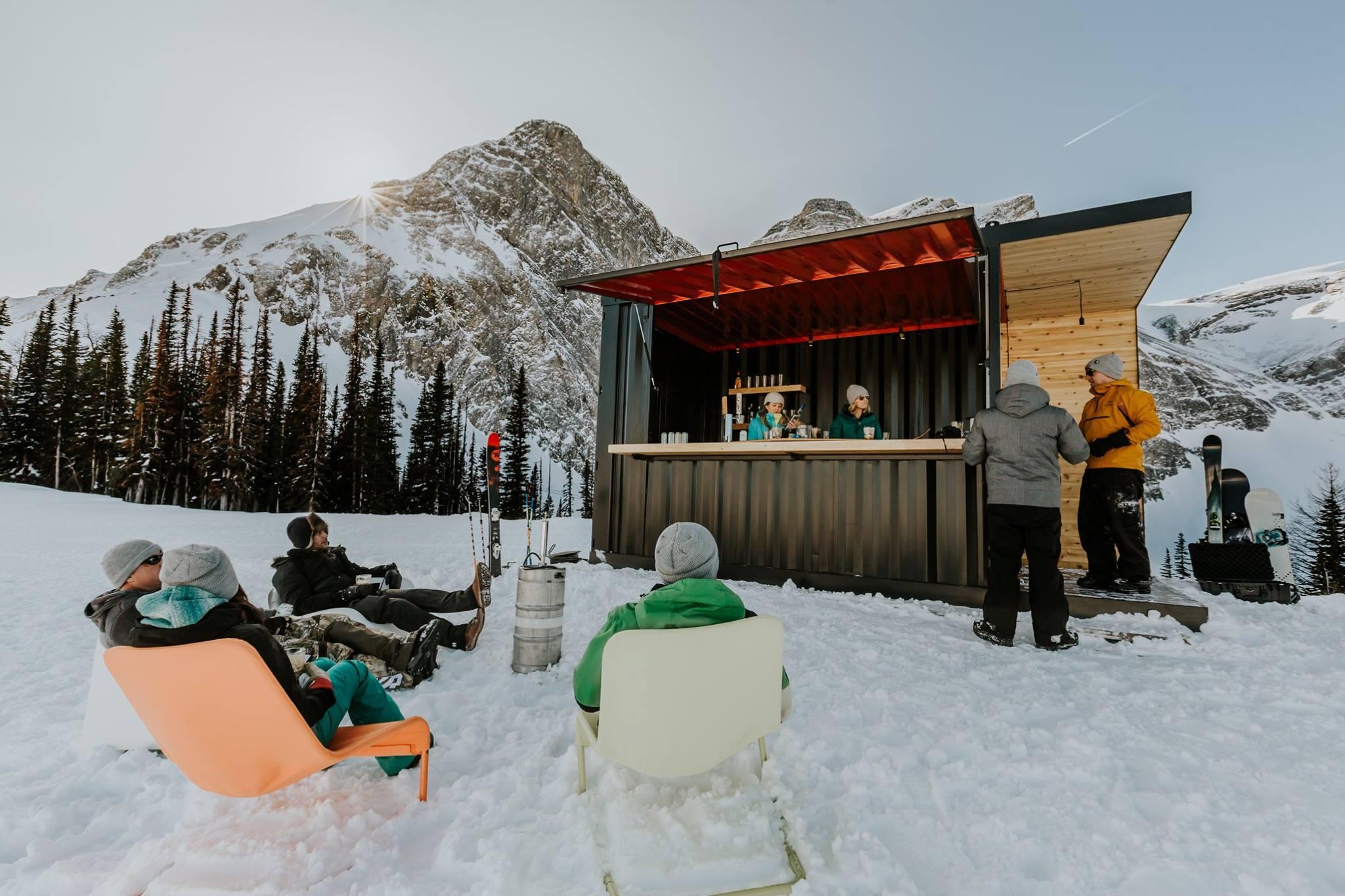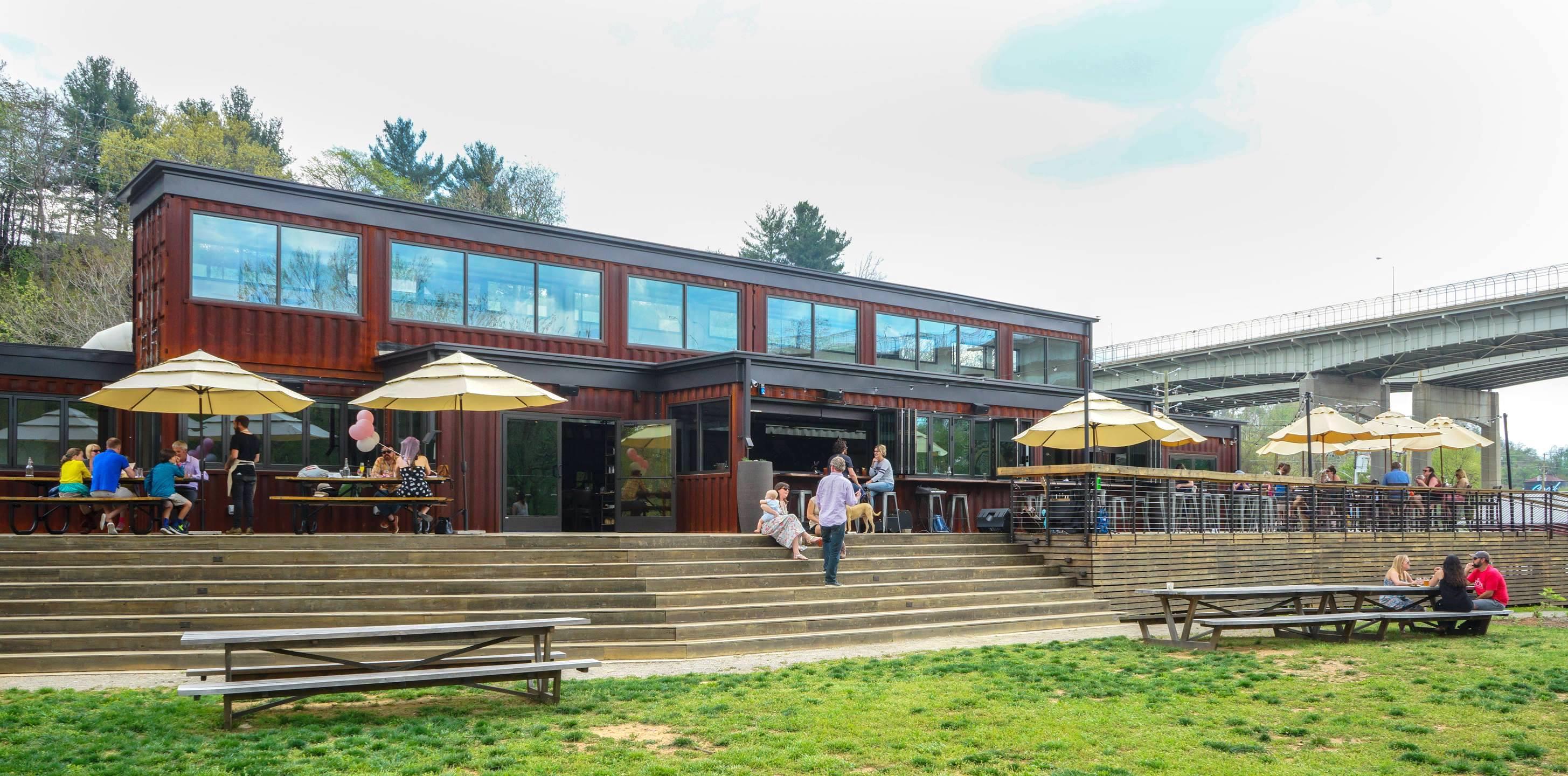How Shipping Container Restaurants Became The Latest Food Craze
Shipping container restaurants are a sustainable, stylish, and cost-effective alternative to brick and mortar.
Updated May 31 2019, 11:07 a.m. ET

Restaurant owners can rarely resist novelty. Fine dining on a crane? A bar in a tree? Been there, done that.
Increasingly, restaurateurs are opening new spots in another unlikely location: shipping containers. While it would be easy to write this off as one more quirky gimmick, shipping containers aren’t just a curiosity. They’re also a cheap, sustainable option for eco-conscious owners looking to lessen the environmental impact of their construction.
Take, for example, The Container. Ska Brewing Company opened this tasting room at their Durango, Colorado headquarters in 2013, fusing together two colorful shipping containers to meet their kitchen and seating needs. “The sustainability piece was huge for us,” says Kristen Muraro, sales and marketing director for Ska Brewing Company. “It just fit in with who we are and our culture and our business model.”

Ska Brewing Company built its brewery with LEED design principles in mind and, although it did not receive certification, Muraro says the company manifests its passion for sustainability across the facilities. She quotes co-owner Matt Vincent, who said, upon The Container’s opening, “We already have solar tubes to light the warehouse, recycled denim for insulation, former bowling lanes for tables — creating a restaurant space by repurposing shipping containers was another way to reduce our footprint. And it’ll look badass.”
In 2013, shipping container restaurants and bars were still a fairly new concept, but nowadays, the trend is well-established. El Rey runs a Mexican beer garden out of repurposed containers in Washington, DC. The Smoky Park Supper Club in Asheville, North Carolina, welded 19 shipping containers together to create its sprawling riverside restaurant. Just a few months ago, the building company Honomobo dramatically announced its new line of “Honomobar” prefab shipping container bars by dropping one in the Canadian Rockies.
The design model comes with advantages outside of rescuing a rusting shipping container from a junkyard. One perk is the dirt cheap construction costs. Shipping containers run as low as $2,000, and allow owners to avoid the high rents that drive plenty of restaurants out of business. There are still permits to secure and modifications to make, but if business fizzles out, you can always pack your shipping container up and try again somewhere new.
The compact nature of shipping containers also helps owners squeeze restaurants into tight city spaces, just like food trucks and pop-up stands. It’s a selling point that Muraro admits can be a double-edged sword. “As the restaurant grows, we’re still limited to a certain size kitchen,” she says. “I would say that’s been the biggest challenge is just, having a smaller space with four or five people working in there and trying to pump out as much food as we need.”
But since shipping containers are so easy to modify, stack, and build upon, space can also be expanded in creative ways. Muraro notes The Container attached an L-shaped add-on to the kitchen several years ago to better accommodate the chefs.
Still, there’s always the question of endurance: are shipping container restaurants a passing phase or a lasting business model? The concept has been making headlines since at least 2010, and few fads last a full decade. But considering the multiple prefab options coming to market and builders offering specialized consulting services, there’s plenty of indication these repurposed spaces aren’t going away.
For Muraro’s money, she thinks shipping containers are here to stay.
“There’s a lot more education out there now on how to do that,” she says. “Especially in a lot of the city areas where the space is limited, it’s a good way to build and be more cost-effective. With the tiny home craze right now, I think a lot of people are doing the same thing with the shipping containers, turning them into houses. So I do think it’ll continue to grow.”

